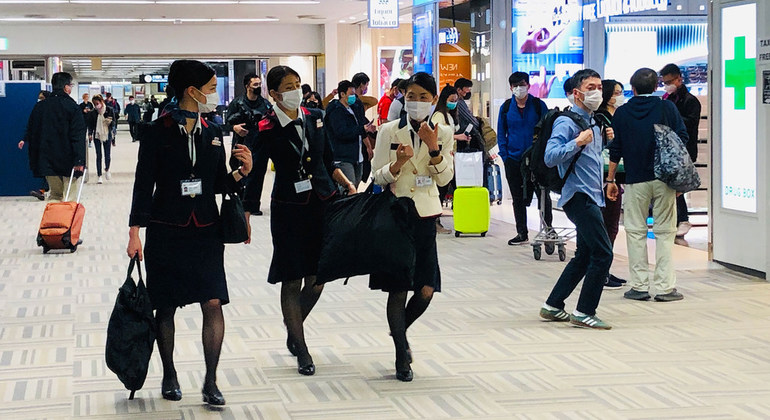Tedros Adhanom Ghebreyesus, the Director-General of the UN World Health Organization (WHO), updated journalists on Tuesday that at 6:00 am Geneva time, China had reported 72,528 cases, including 1,870 deaths.
And in the past 24 hours, China said it had 1,891 new cases, including both clinically- and lab-confirmed cases.
COVID-19 first appeared in December 2019, in the Chinese city of Wuhan, the epicentre of the outbreak.
Outside China
“Outside China, there are now 804 cases in 25 countries, with three deaths”, the WHO chief continued, noting that in the past 24 hours, 110 new cases had been reported, including 99 on the Diamond Princess cruise ship, on which thousands of people had been stuck under mandatory quarantine off the Japanese port city of Yokohama.
For more than a month, WHO has been supporting national authorities in other countries with cases, to track the virus and understand how people became infected.
So far, there are 92 cases in 12 countries of human-to-human transmission.
“At the moment”, he explained, “we don’t have enough data on cases outside China to make a meaningful comparison on the severity of disease or the case fatality rate”.
However, he continued, “we’re following up with countries to get more information about what happens about each case and the outcome”.
Mr. Ghebreyesus said that WHO has not yet seen a sustained local transmission, except in specific circumstances, like the Diamond Princess cruise ship.
On guard
The WHO chief spoke to Singapore’s Minister of Health yesterday and said: “we are very impressed with the efforts they are making to find every case, follow up with contacts, and stop transmission”.
“Singapore is leaving no stone unturned, testing every case of influenza-like illness and pneumonia”.
So far, they have not found evidence of community transmission.
He also spoke to the Minister of Health of Malaysia to discuss the Westerdam case and other aspects of their preparations.
Before Cambodia allowed it to dock, the Westerdam cruise ship had been stranded at sea – turned away by five places in Asia because ports worried that passengers may transmit the coronavirus.
“These signals show the importance of all countries being ready for the arrival of the virus, to treat patients with dignity and compassion, to protect health workers and to prevent onward transmission”, said the head of WHO.
Detecting the virus
With WHO support, many countries are taking steps to prepare themselves.
“We’ve shipped supplies of personal protective equipment to 21 countries and will ship to another 106 countries in the coming weeks”, Mr. Ghebreyesus said.
“By the end of this week, 40 countries in Africa and 29 in the Americas are due to have the ability to detect COVID-19”.
Many of these countries have been sending samples to other countries for testing, waiting several days for results. Now they can do it themselves, within 24 to 48 hours.
Meanwhile, some countries in Africa, including the Democratic Republic of the Congo, are leveraging the capacity they have built up to test for Ebola to test for COVID-19.
“This is a great example of how investing in health systems can pay dividends for health security”, said the WHO chief.
Other countries, like Namibia, Nigeria and Timor-Leste, are running workshops with the media to ensure accurate and reliable reporting.
At the same time, several countries are prioritizing surveillance and monitoring at ports of entry, including Bangladesh, Cambodia, Ethiopia, Pakistan, Serbia and South Sudan.
“We’re also working with partners in some of the most fragile contexts, from Syria to the Central African Republic to prepare countries for the arrival of the virus”, he said.
“We still have a chance of preventing a broader global crisis”, concluded Mr. Ghebreyesus. “WHO will continue working night and day with all countries to prepare them”.



-350x250.jpg)